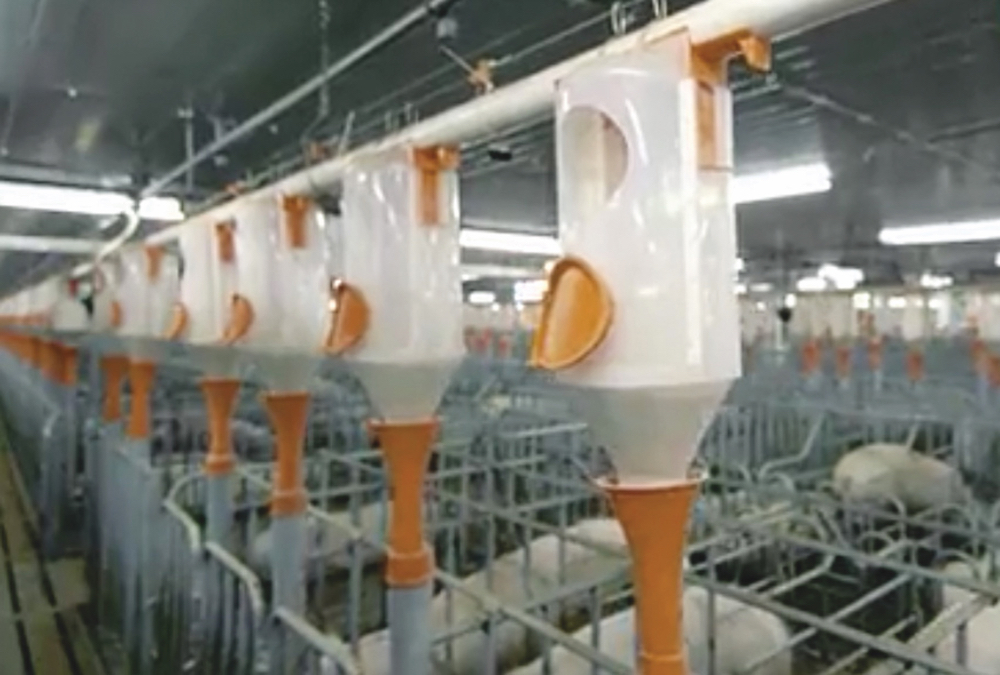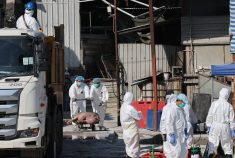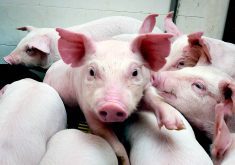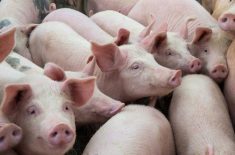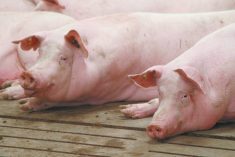Chinese hog industry officials say the country is poised to put African swine fever behind it as early as next year.
But a leading Canadian authority says that may be premature.
The fatal pig disease devastated China’s hog herd — the world’s largest — reducing it by around half last year and prompting the government to offer incentives to rebuild the sector. One of China’s largest pig breeders, New Hope Group, said it will sell eight million hogs this year — more than double last year’s total — and its production will rise to 15 million next year and 25 million pigs in 2022.
Read Also

Grazing ‘sweet spot’ boosts pasture performance
Timing-focused approach to pasture management touted to boost forage growth, livestock gains while also cutting farmer labour and inputs
Big companies, including new players that made their money in real estate or the internet, are also rushing into the sector, said chairman Liu Yonghao.
“These companies, with big money, usually invest a lot,” Liu said. “On the one hand, they can push the development of pig farming rapidly. On the other hand, it will definitely lead to oversupply and finally, push prices below production cost.”
That would be yet another blow to Canada’s beleaguered pork sector, which had been hoping for better times after a big jump in exports to China this year — until the pandemic arrived and disrupted processing here.
But it may be too early for China to declare victory over African swine fever, said Dr. Egan Brockhoff, an Alberta veterinarian who is a leading authority on the disease and serves as veterinary counsellor with the Canadian Pork Council.

“There’s no question that African swine fever continues to circulate in China and southeast Asia,” said Brockhoff. “It’s hard to know the full extent of the virus circulation. But speaking with my colleagues there, they tell me the virus is still circulating. Herds are still being affected.”
African swine fever is a viral disease that spreads very easily and swept across China in just a few months last year. The country’s focus has been on repopulating breeding herds, and producers have been reaching into their commercial sow barns and pulling out females previously destined for slaughter. Terminal sires and gilts have also been retained for breeding.
“The feedback that we’re getting is that they’re not near as productive as the purebred or F1 maternal lines,” said Brockhoff. “That’s had an impact as well.”
So too has the pandemic.
“COVID-19 has interrupted the entire network of moving and selling pigs,” he said. “It’s not an insignificant challenge for them to deal with that. It is really hard to estimate what is happening with mortality.”
There is limited information because his Chinese colleagues were in lockdown for three months and no one has been allowed to go into China to see what is happening, he said. But while that raises questions over how much progress has been made, China’s move towards larger, modern hog farms will pay dividends, he added.
“You’re seeing larger farms, or farms with more robust biosecurity, having more success,” said Brockhoff.
But the best indicator of the disease containment and rebuilding efforts comes from watching imports, he said.
“They (Chinese buyers) have been on the market on the global level for the last couple of years. That doesn’t seem to be slowing down at all,” he said.
“That’s encouraging on one side. That sets the global demand, and helps set a solid price for the foundation. If you can get pork to market, there’s a good price there for you.”
Unlike Canada, China has not had any processing plant closures. Brockhoff said he consulted with his Chinese colleagues for advice on plant closures, but they had no familiarity with them, since the systems are so different.
Instead, China has been having a different problem.
“They can’t find enough pork to keep processing,” he said. “Slaughter plants haven’t had enough pork to slaughter. That’s been ongoing for a while.”
While some might assume the pandemic has reduced the risk of African swine fever spreading, Canada has to remain vigilant, Brockhoff said.
“We do not want that disease here,” he said. “There’s no question that if we got ASF in Canada at the same time that we’re trying to deal with COVID-19, it would be extremely difficult for us to deal with that.” — With files from Reuters


